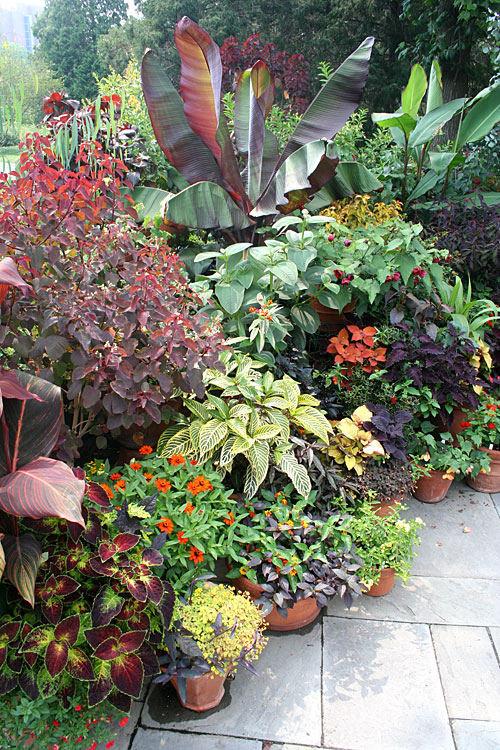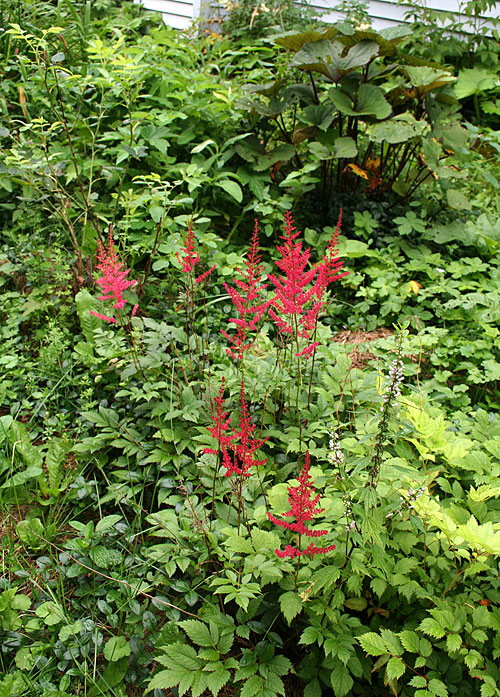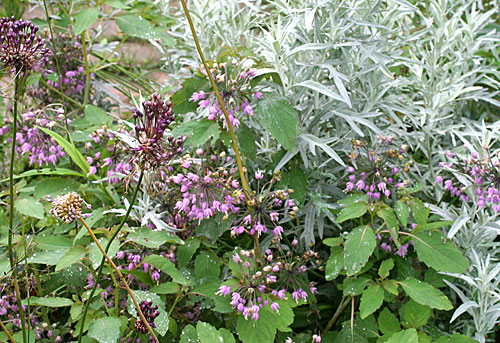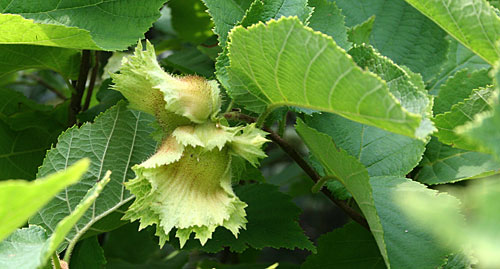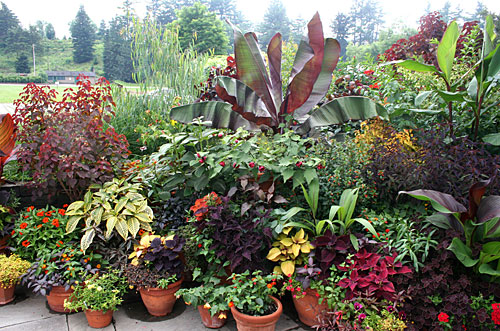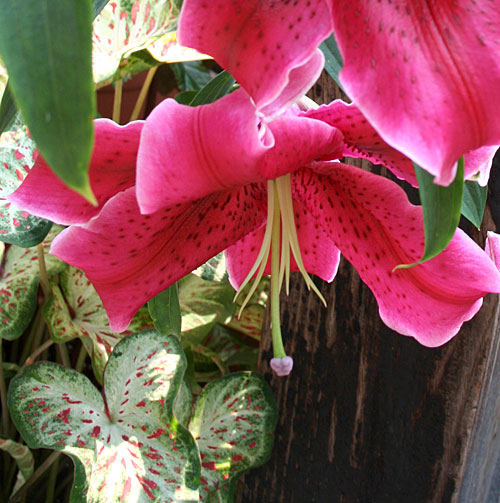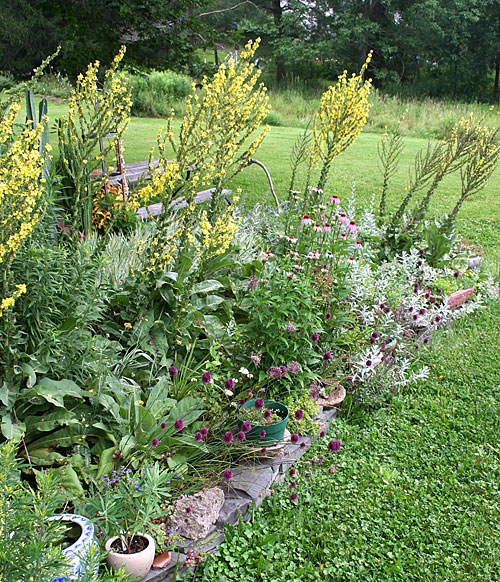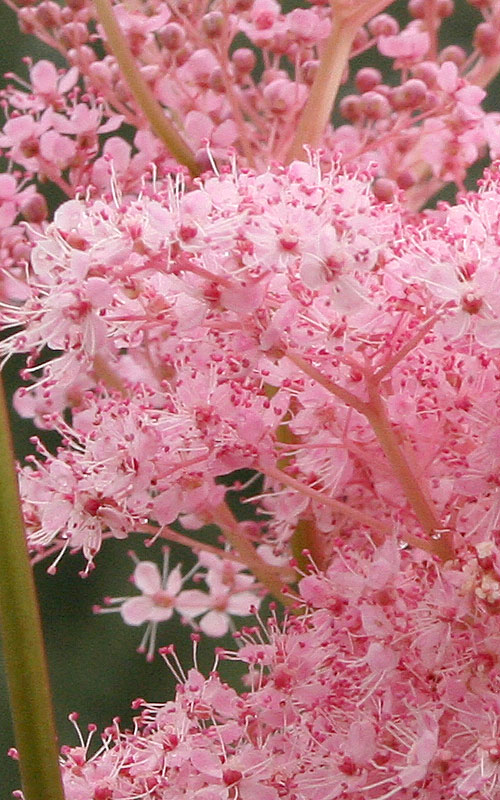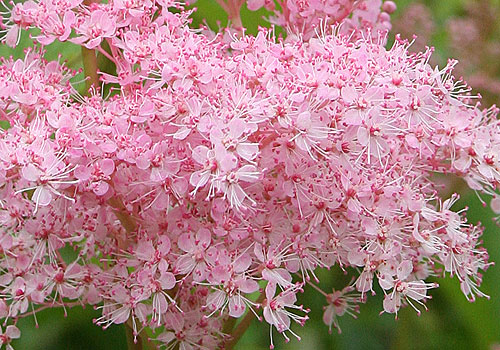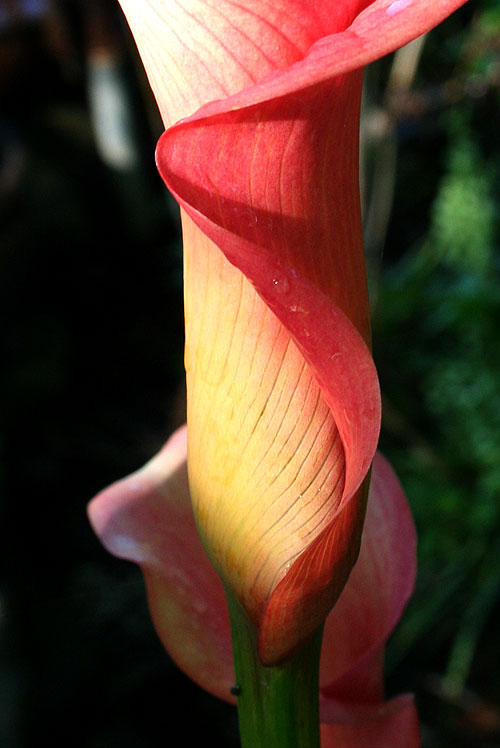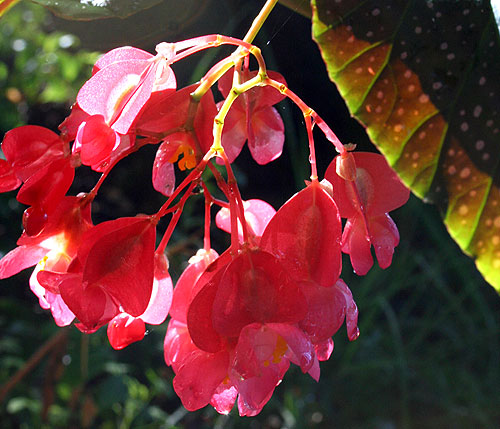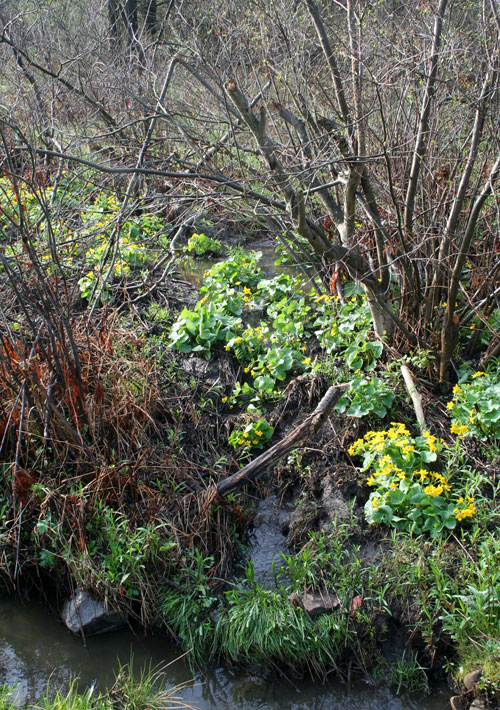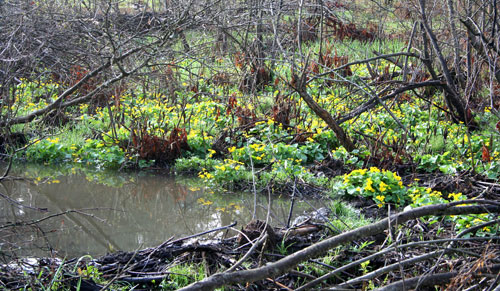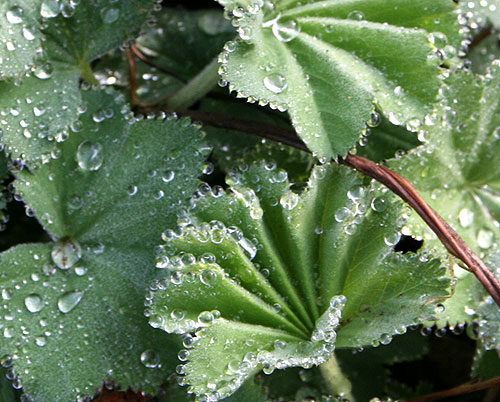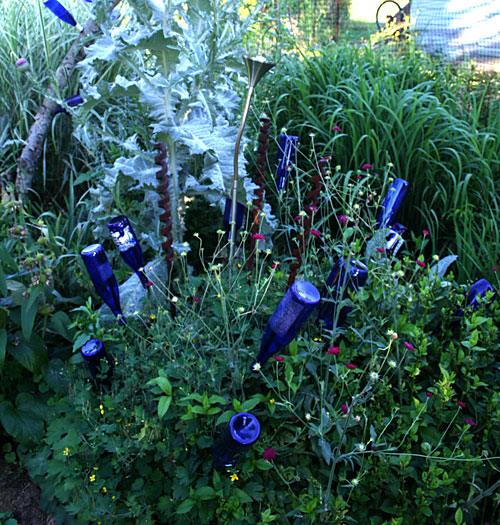
Blue bottle ‘flower’ (with boat augers and lamp fixture). Blue bottle tree in background.
A couple weeks after Nan announced this round of the Garden Bloggers’ Design Workshop, Steve Orr’s New York Times Q&A column in The New York Times (Picking Accessories for the Plants) offered good advice on garden ornamentation that applies equally to whimsy. His advice:
- Don’t go overboard.
- Use found objects.
- Use surprise.
- Make ornaments focal points, but don’t distract too much from the plants.
Even in a very lushly planted yard, a visitor’s eye usually will go straight to any nonplant feature. It’s best not to have several ornaments visible at a glance, competing with each other, since the most interesting landscapes have a little mystery. Place one object half-hidden in a leafy shrub and position another around a corner, so that its discovery is a surprise.
Did I mention don’t go overboard? If I have a problem with whimsy in the garden, it’s probably that my eye gets too accustomed to whimsical elements. Before you know it, my yard will be filled with crap. Hopefully I’ll notice before the neighbors.
For those of you who aren’t in the neigborhood, here’s what I’ve got scattered around. (The camera exercise once again reveals to me I’ve got way more than I thought.) I’ll also include some shots from other gardens at the end.
Floating bowling ball on bent rebar. Long story of the midnight bowling ball accident of 2003 from a previous design workshop post.
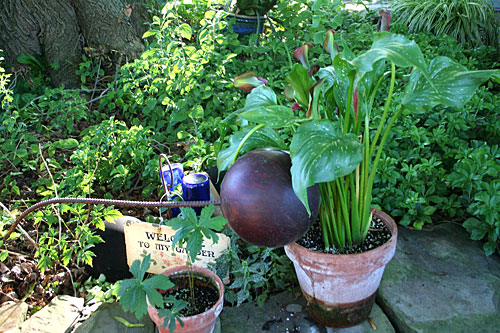
Sugar and flower canisters make great pots. So do olive oil cans.

How could I not buy a bottle of Chilean brandy when the bottle looks like an Easter Island statue? It was all I could do to drink the brandy. But I earned a container ornament for my efforts.

Jade checks out the happy turtle. Not so visible in the pot is an ancient hand-made Chia head that I remember from childhood. It split a few years ago so now I have two profiles looking up at me from the pot.
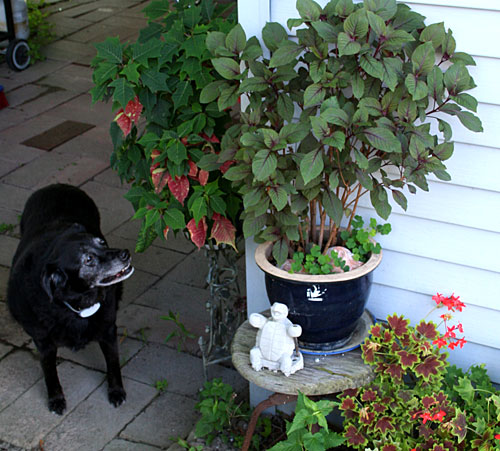
Someday I’ll make a pilgrimage to the local pink flamingo factory and get a real one. But for now I like the one I have with its spinning wings.
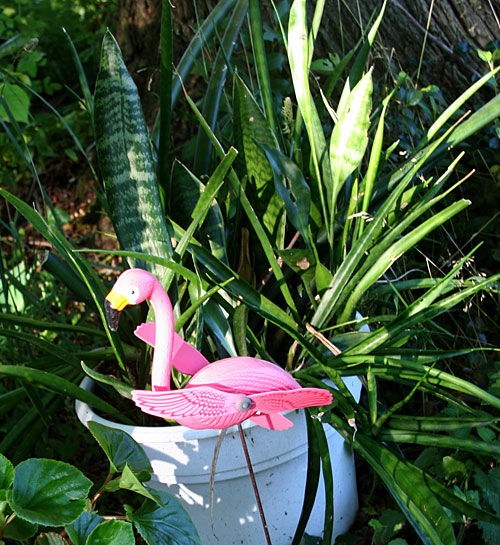
Sloggers still work as hanging container for succulents. Back story and my infamous garden footwear review.
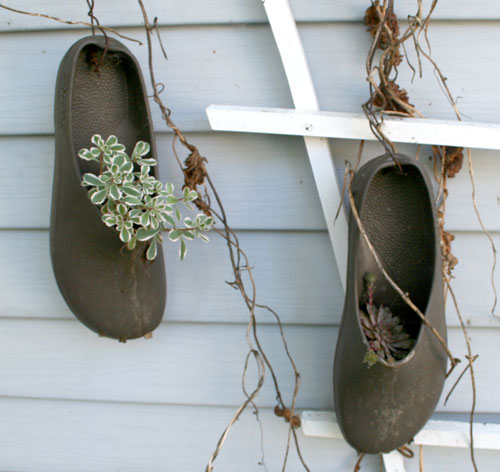
Spilled trough with hypertufa balls.
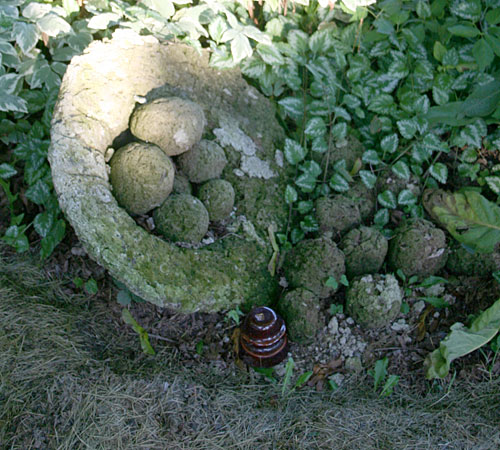
Glow-in-the-dark tree guy.
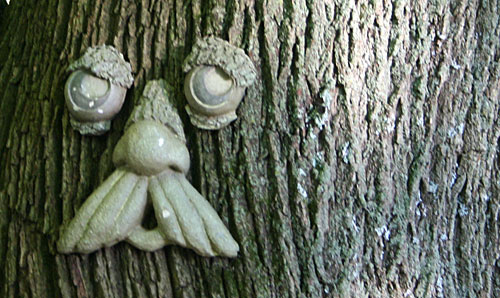
My mini-water-garden probably counts more as ornamentation than it does as whimsy.

I float blossoms in this old cattle waterer.
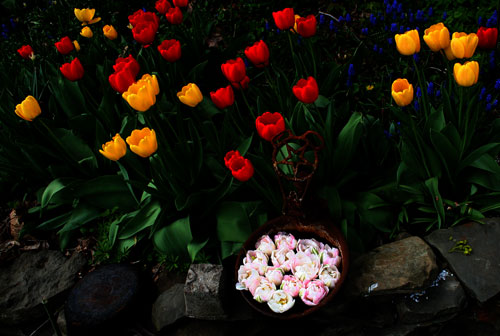
My friend Marcia has a pretty whimsical garden. She does it with a lot more class than I do. More pictures of her garden here.
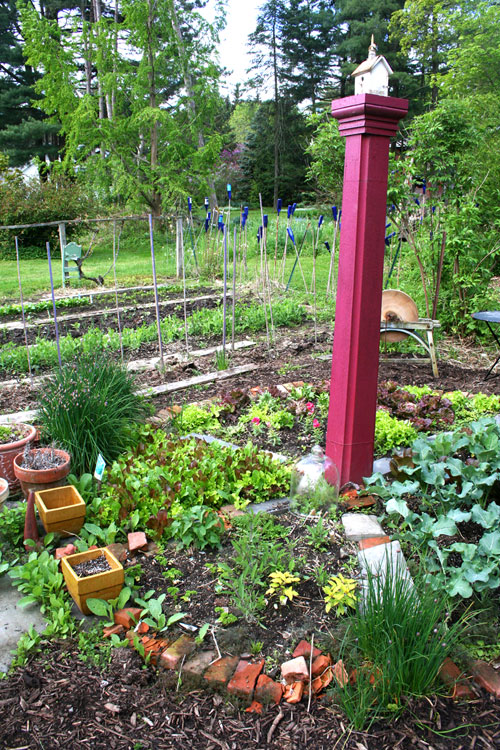
Shirley G. has the best whimsical garden in these parts. Shirley is a member of our local Adirondack Chapter of the North American Rock Garden Society. The group toured her garden back in 2005, when I took these pictures.
A salvaged canopy bed that I picture now covered with vines.

The family.

Best shoe garden I’ve seen.
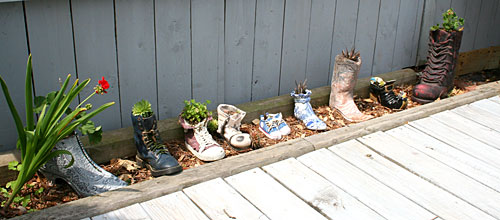
Shirley also had a cool heart-shaped water garden tub, a Wizard of Oz garden and lots of other cools stuff punctuated by some great plants.
Have at it. Just don’t overdo it.



